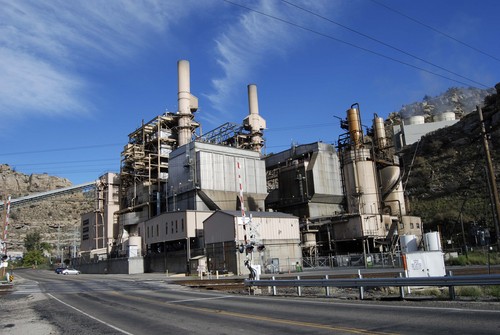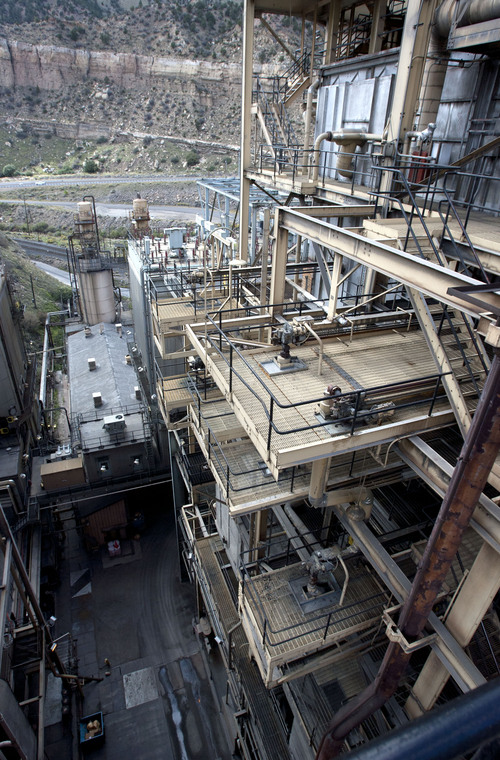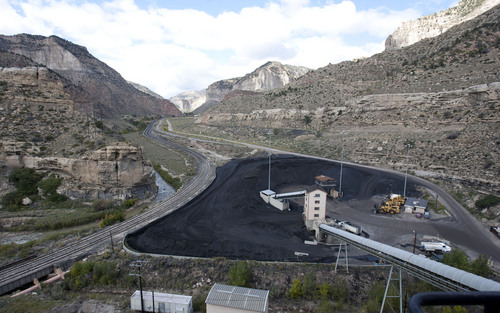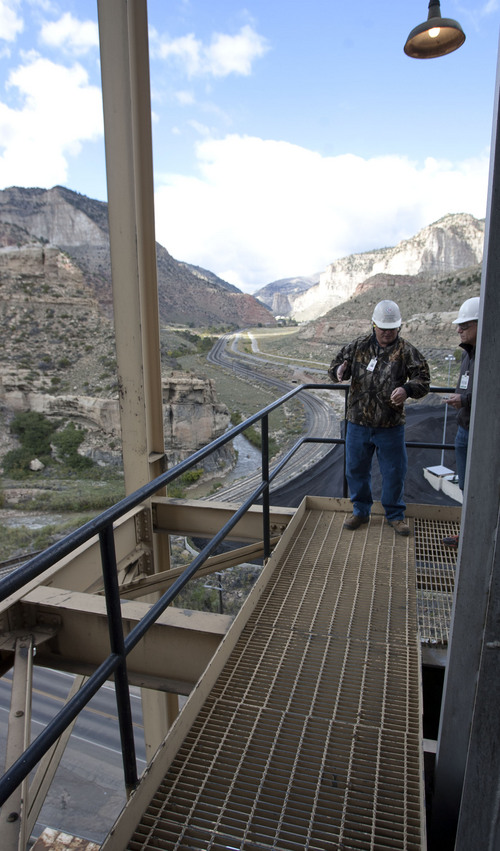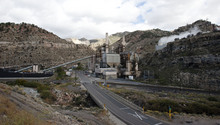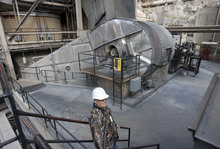This is an archived article that was published on sltrib.com in 2013, and information in the article may be outdated. It is provided only for personal research purposes and may not be reprinted.
Helper • Deep inside a power station at the mouth of Price Canyon, two 60-year-old generators are spinning at 3,600 rpm, pushed by steam produced from burning Utah coal.
The alternating current emerges from the building at 138 kilovolts. It is immediately boosted to a higher voltage at a substation for distribution around central Utah, where it can power about 47,000 homes.
The state's oldest coal-burning station, the Carbon Power Plant is slated for an early retirement next year in the face of long-awaited federal limits on mercury emissions, according to Rocky Mountain Power.
The 172-megawatt plant's location against steep canyon walls at Castle Gate leaves insufficient room to install the filtration equipment called "baghouses" and other features needed to remove toxin-bearing particulates from the exhaust rising from the stacks, according to utility spokesman Dave Eskelsen.
"The way rules are being crafted there is a regulatory environment that will cause a transition away from coal because of air-quality concerns," Eskelsen said. "But that transition is going to be reasonably gradual. We expect to be able to operate our coal plants to the end of their regulatory lives."
But without practical options to achieve compliance at the Carbon station with new emissions standards, the utility has concluded it's best to decommission it several years ahead of schedule.
While no one is celebrating the loss of its 74 jobs, many environmentalists hope to speed the nation's transition from coal to natural gas, which releases half the carbon per unit of electricity generated, and renewable sources. Wind and solar emit nothing other than electricity and lack nuclear power's issues with high costs, safety, waste and heavy water demand.
—
Coal's changing role • The Carbon plant is among the nation's 150 coal-burning plants whose retirements have been announced since 2010. For years coal has been the cheapest fuel for generating power, but not anymore.
"What has changed is the price of clean energy has plummeted and the coal industry has finally had to clean up its air, water and waste pollution," said Bruce Nilles, senior director of the Sierra Club's Beyond Coal campaign.
The 150 plants to be retired generate 58,000 megawatts, accounting for about one-sixth of the nation's electrical output coming from coal, according to the group.
The mercury rules that are speeding some of these into retirement have been in the works since the Clean Air Act was amended in 1990. While many other industries have long been held to rigorous standards for mercury and other toxic emissions, these rules weren't imposed on power generation facilities until two years ago, with a compliance deadline in April 2015.
"This rule has had this bizarre 22-year route that is emblematic of all the ways the coal industry has enjoyed exemption after exemption," Nilles said. "Coal may have been good in the past, but we know now it has profound public health and environmental costs."
The state's largest power plant, operated by the Intermountain Power Agency near Delta, still burns coal for now. A power source for Southern California, the plant is slated to be converted to natural gas, but not because of mercury pollution. California is fast losing interest in power from coal because of the fuel's climate-altering carbon-dioxide emissions, so IPA must switch or risk losing its biggest customers.
—
Reducing emissions • Rocky Mountain Power (RMP) still relies heavily on coal, which now accounts for 60 percent of its generating capacity. Natural gas covers 12 percent, hydro and wind each account for about 8 percent, while other renewables barely register, according to the company.
RMP's coal-fired workhorses in Utah are the 1,320-megawatt Hunter and 895-megawatt Huntington plants, both located in the heart of Utah's coal country and both with a lot of life left in them. The utility has invested $1.5 billion since 2005 in emission-control upgrades at all its coal plants.
However, it will convert a 326-megawatt unit at its three-unit Naughton station in Wyoming after concluding conversion is the most cost-effective strategy for achieving compliance at that unit, Eskelsen said.
Federal regulators hope the new mercury standards will prevent 130,000 asthma attacks and 11,000 premature deaths each year.
The air quality improvements will be worth $37 billion to $90 billion in human health benefits, the U.S. Environmental Protection Agency says, by preventing 90 percent of the mercury in coal from being released.
The rule will also sharply reduce emissions of sulfur dioxide, acid gases and heavy metals such as arsenic and chromium.
The Carbon plant's annual contribution to this pollution is about 215 tons, including 58 pounds of mercury, 3,435 of lead and 322,000 of hydrochloric acid, according to EPA's Toxics Release Inventory.
It is unlikely RMP will develop new coal plants for the foreseeable future, because it's uncertain whether complying with new federal limits on carbon emissions would be in ratepayers' best interests.
"Carbon capture technology is not mature enough," Eskelsen said. "We were not able to tell our regulators what a coal[-burning] unit would cost long term."
bmaffly@sltrib.com After decades of power production, Carbon Power Plant faces an early retirement
History • Utah Power and Light built the Carbon Power Plant in the 1950s near the Castle Gate coal mine, which has since closed. In the 1970s, after the Clean Air Act was enacted, the utility installed massive electrostatic precipitators to capture many pollutants.
Fueling the plant • Monday through Friday, 75 trucks deliver sub-bituminous coal, which is cleaner but produces less energy than other types, to feed the plant's 1,800-tons-a-day appetite. Coal is fed into the plant on a conveyor system over U.S. Highway 191. A 30-day supply is piled on the site of the town that once housed those who labored in the nearby mines.
How it works • The pulverized coal is blown into 90-foot-high boilers to fuel a spinning fireball, plant manager Kyle Davis explains. The flames visible through tiny windows heat water in pipes that deliver the resulting steam to the turbines, whose fins are moving at the speed of sound. This steam-driven technology has changed very little over the past century, whether the fuel stock is coal, natural gas or uranium rods.




